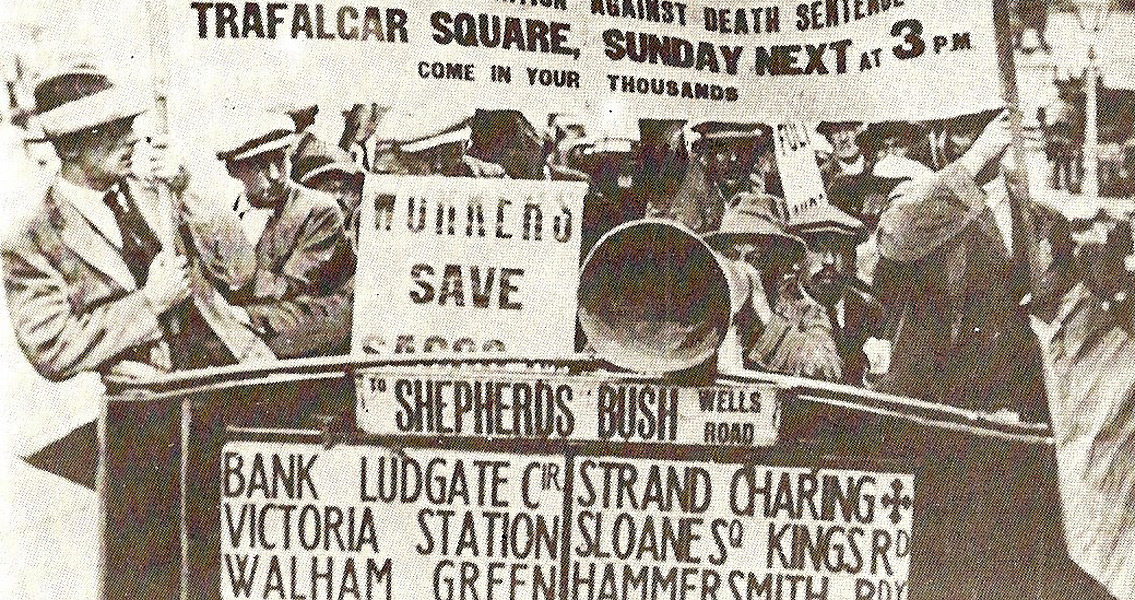<![CDATA[On the 5th May, 1920, Nicola Sacco and Bartolomeo Vanzetti were arrested and charged with murder. The event marked the start of the one of the most controversial trials in American history, whose verdict is still questioned today. The charges related to a crime that had taken place several weeks before. On 15th April, F.A. Parmenter, the paymaster of a shoe factory, was robbed by two men in order to secure the pay roll he was carrying. Both Parmenter and the guard accompanying him, Alessandro Berardelli, were killed in the robbery. Sacco and Vanzetti were arrested when they attempted to collect a car the police believed to be the getaway vehicle from the crime. Believing that the robbers would attempt to retrieve the car at some point, the authorities had instructed the employees of the Johnson Garage in Boston (where the car had been impounded) to call them if the suspects appeared. Sacco and Vanzetti arrived at the garage with two other men, Riccardo Orciani and Mario Buda, but it seems they sensed the trap. Orciani and Buda escaped, while the other two were captured on a tram trying to flee the scene. Both carrying guns when they were arrested, the two quickly became the prime suspects in the robbery and murder. Two Italian immigrants, both Sacco and Vanzetti were already known to the police as anarchists. Radical literature was found in the car abandoned at the initial crime scene, furthering this image of two dangerous, foreign radicals. In the midst of the 'Red Scare': a widespread fear of radical politics in the United States following the Russian Revolution, Sacco and Vanzetti's political leanings drastically impacted public opinion towards them. The men were indicted on 14th September, 1920, and their trial began on 21st May, 1921. Details of the trial reveal the controversy behind the guilty verdict reached seven weeks later. Both defendants had only a limited understanding of English, and records of their testimonies reveal that they often misunderstood the questions put to them. Although an interpreter was eventually employed on their behalf, this itself became an issue of contention, with the defendants ultimately bringing their own interpreter to the trial to check the accuracy of the translations made by the court appointed one. A key piece of evidence in Sacco and Vanzetti's initial indictment had been their inability to prove their whereabouts at the time the robbery of the shoe factory took place. Nevertheless, 107 witnesses at the trial claimed they had seen the defendants somewhere away from the crime scene at the time of the robbery. The trial and the verdict triggered protests around the world, with people calling for the two men to be released. Questions were raised about the evidence used in the trial, and the impartiality of the judge, Webster Thayer. Protests escalated dramatically following a confession from Celestino Madeiros, on trial for another murder, that he had killed the paymaster and guard. Nevertheless, Sacco and Vanzetti's appeal was overturned and the two men were executed in August 1927. Since then, much of the evidence against Sacco and Vanzetti has been discredited. Although in 1961 forensic tests supposedly proved that Sacco's gun had been used to kill Berardelli, Sacco and Vanzetti were vindicated by the governor of Massachusetts in 1977, on the grounds that they had not been tried fairly. Sacco and Vanzetti's arrest and trial, less than a century ago, provide a reminder of the fear of radical politics that existed in the early twentieth century. Whether the two men were actually guilty or not, it is clear that prejudices based on their political beliefs and immigrant status affected the fairness of their trial. ]]>
Sacco and Vanzetti Arrested
